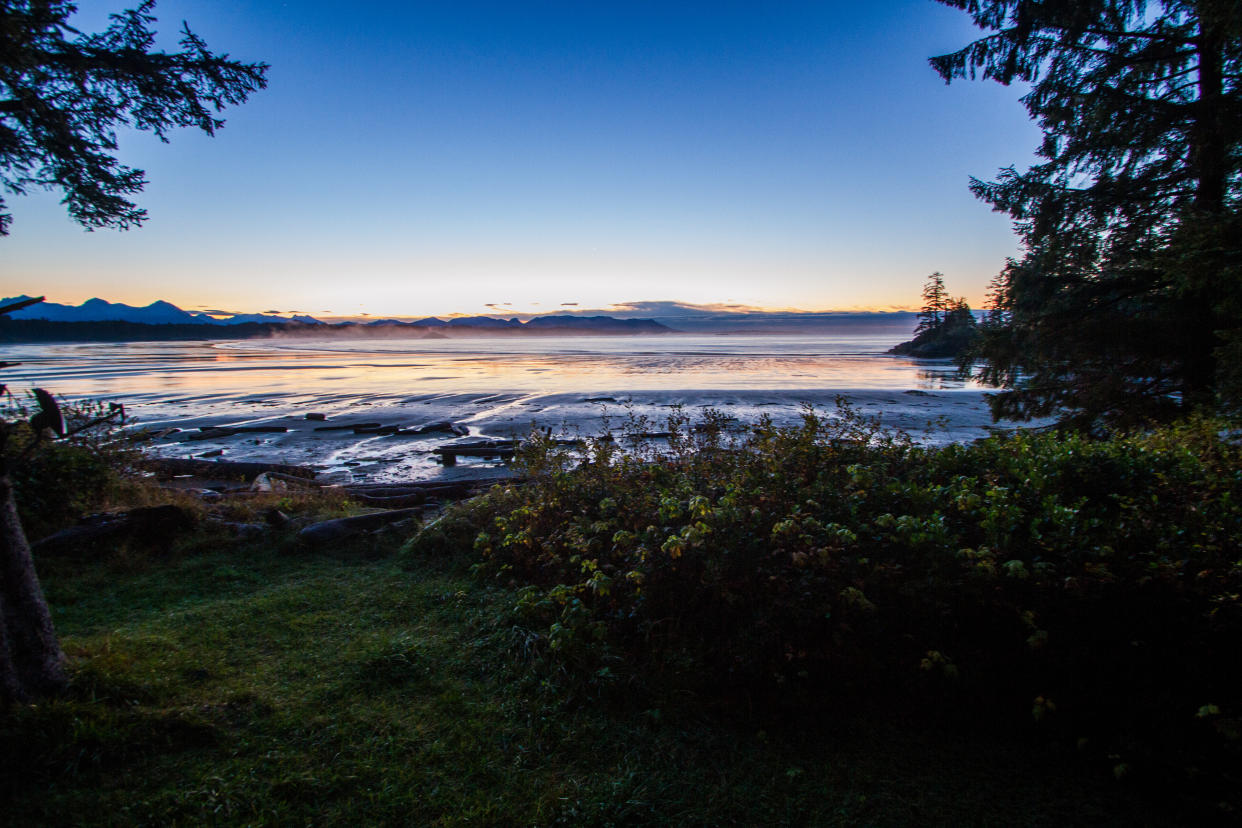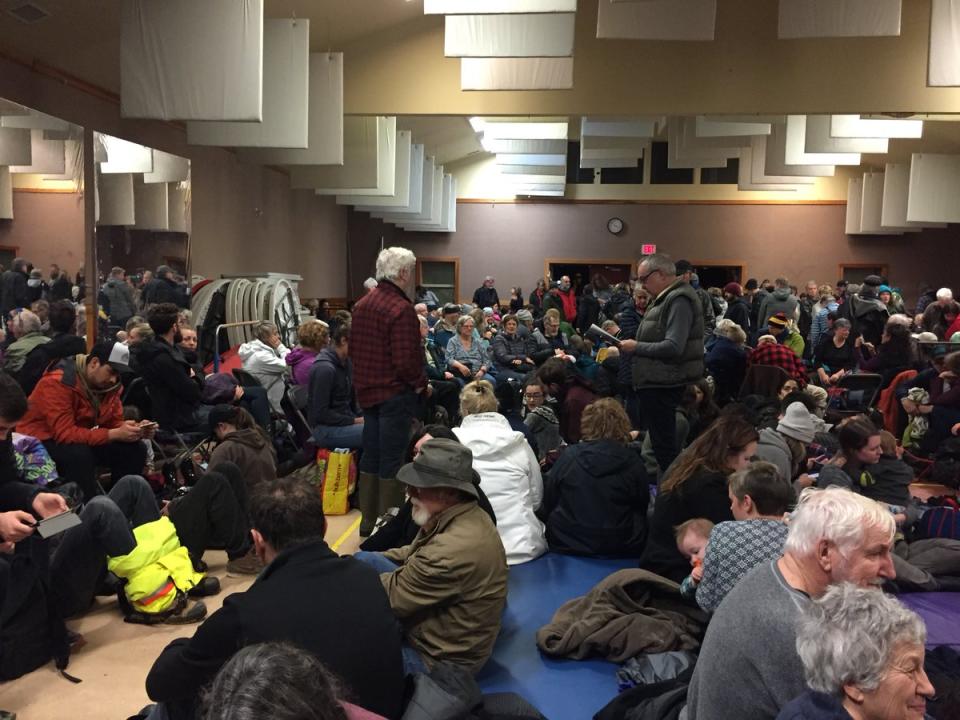B.C.'s big earthquake: 'It could be tomorrow, it could be 200 years from now'

The British Columbia coast is known as a high risk zone for natural disasters, particularly earthquakes and resulting tsunamis. On January 23, 2018, a 7.9 magnitude earthquake in Alaska resulted in a tsunami warning for the B.C. coast but ended up not being a tsunami-producing earthquake. Experts say the “underrated” hazard of a strong earthquake and tsunami is expected to happen in the future, and residents on the B.C. coast should be prepared.
“We studied the record of earthquakes and tsunamis on the Pacific Northwest coast, particularly on Vancouver Island, and we have clear evidence that these earthquakes and tsunamis have occurred back through geologic time,” Dr. John Clague, professor with the department of earth sciences at Simon Fraser University said. “We think we have evidence of about 20 of these big events, so you can do the arithmetic and the average repeat interval is about 500 years.”
Clague identifies that the last big tsunami producing earthquake happened in 1700. A magnitude nine earthquake struck the Pacific Northwest coast, in the Cascadia Subduction Zone, and sent a tsunami across the ocean to Japan. It not only had a huge impact on Japan, but Clague identifies that there is also evidence that the event affected people living on the coast of B.C. and Washington.
As time progresses, the probability of a massive earthquake and tsunami becomes greater, with one likely on its way in the next 200 years.
“I hate to say this, it could be tomorrow, it could be 200 years from now but from my perspective it’s an inevitability so it’s something you have to prepare for,” Clague said.

Distant and local tsunamis
Earthquake triggered tsunamis can be sourced at distant locations, particularly in Alaska but also in other places around the Pacific Rim, Japan and Kamchatka. These are all places with subduction zones, where one piece of the shell of the outer earth is moving down beneath another.
When a bigger earthquake occurs, the seafloor is lifted or dropped. That sets in motion waves that move through the water reach the shore on coastal areas. This is called a tele-tsunami, or distant tsunami to the point of interest, such as the B.C. coast.
According to Clague, in the case of a distant tsunami, like one that begins with an earthquake in Alaska, you would not feel shaking in coastal B.C. because it is too far away. Residents would have three to four hours to put their safety plan in action.
“The Alaska setup is perfect for getting tsunamis that can impact our coast,” Clague said.
Local tsunamis are produced by giant earthquakes along a subduction zone. They would be similar to tsunamis generated at distant locations however, these tsunamis reach populated areas much sooner.
“In the case of a great Cascadia earthquake a place like Tofino of Ucluelet on the outer coast would be impacted within about 20 to 30 minutes,” Clague said.

False alarm
The recent Alaska earthquake did not end up resulting in a tsunami near the B.C. coast because it was a “strike-slip” fault, where two blocks of the crust along a fault move horizontally. This does not result in rising or a lowering of the sea floor.
“[Officials] were worried, and rightly so…they first thought that it could be a subduction earthquake and that’s a classic tsunami generating earthquake,” Clague said. “Strike-slip faults, these horizontal movements of earth crust don’t trigger tsunamis or trigger very small tsunamis.”
After the tsunami warning for coastal B.C. ended, experts were generally pleased with the emergency measures put in place in coastal areas.
“I thought everything went exactly according to the way it should have gone,” Samantha Watkins, an organizing committee member of ShakeOutBC, an initiative of B.C. Earthquake Alliance that aims to increase earthquake awareness and preparedness, said. “Everybody put out good notification about what the residents should be doing and I think it went very well, from my personal perspective.”
@TofinoEmergency muster centre, all cozy and settling in for the morning. If you’re not here, get here! #Tsunami #Tofino pic.twitter.com/EbXY9RLbOJ
— Catherine Lempke (@Cat_Lempke) January 23, 2018
According to the District of Tofino’s post-warning information bulletin, emergency personnel and first responders directed residents to the reception centre at Community Hall. Tofino resident Catherine Lempke took to Twitter to provide updates from the reception centre, sharing that everyone was “calm and chatty.”
Beginning in April, all wireless providers will push alert messages to phones in an area where an alert is in place via text message.
Clague also believes the emergency plan put in place in coastal areas during the false alarm was effective overall, but he did hear from individuals in remote areas who were less successful with communication.
“I’ve heard from people in remote communities on the coast, they don’t have internet service and they’re totally reliant on landlines and radio, and they didn’t know anything about this the day after,” Clague said. “It’s sort of servicing the bigger communities, the system that we have in place, but it’s not so good for people living in more remote areas without cell service.”
Watkins and ShakeOutBC recommend that resident of coastal B.C. use this tsunami scare as a prompt to prepare their emergency plan, including creating an emergency kit and making sure B.C. residents have an out-of-province contact.
“You need to have 72 hours worth of supplies for every member in your household, including pets, and we like to remind people to include medications and cash,” Watkins said.
According to Clague, if you experience three to five minutes of ground shaking, it’s likely a magnitude eight or nine earthquake and you should be prepared for a resulting tsunami.
“A large-scale earthquake is planned for sometime in the future, but there’s no way for us to tell when it is, so you just have to be prepared,” Watkins said.


